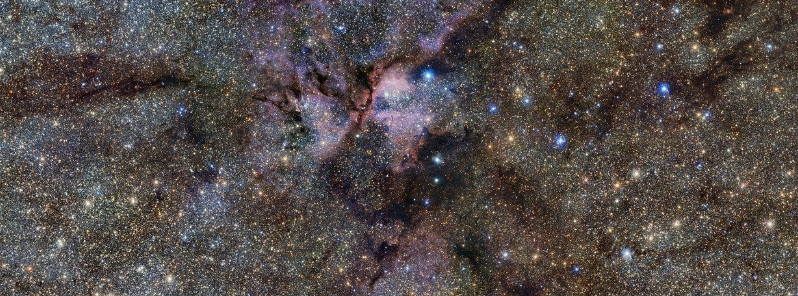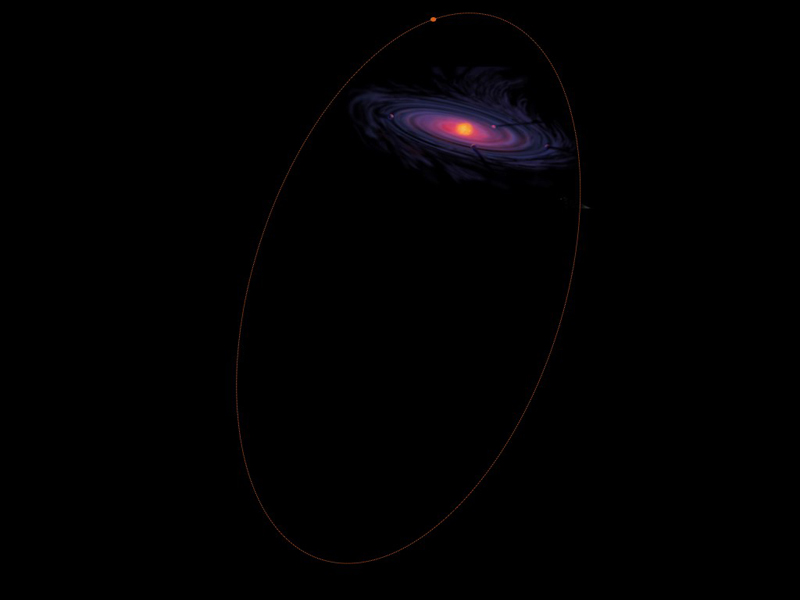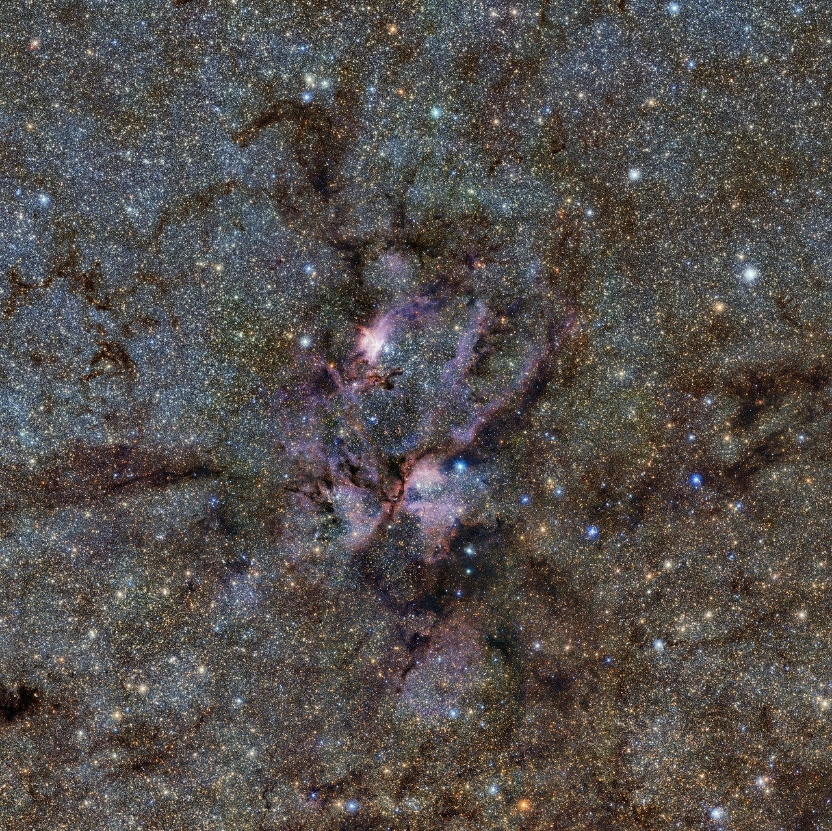First interstellar asteroid population discovered

A new study has identified the first known permanent set of asteroids originating from outside our solar system. These are believed to have been captured from other stars billions of years ago, orbiting the Sun in disguise ever since.
The findings came more than two years following the discovery of our first interstellar visitor, the asteroid Oumuamua. The interstellar asteroids, part of a population of space objects called Centaurs, may have been orbiting another star billions of years ago when stars were nearer each other.
Unlike Oumuamua which just passed through, the newly-identified asteroids are thought to have existed almost since the beginning of the solar system, 4.5 billion years ago in a star cluster where each sun had its own asteroids and planets.
"The close proximity of the stars meant that they felt each others’ gravity much more strongly in those early days than they do today," said lead author, Dr. Fathi Namouni. "The close proximity of the stars meant that they felt each others’ gravity much more strongly in those early days than they do today."
In the study, Namouni and his co-author, Dr. Maria Helena Morais, conducted numerical simulations of the solar system's earliest days, generating a snapshot that allowed them to look into where the asteroids were located originally.
At the time of the image, the asteroids were orbiting the Sun in a distant region, beyond the original solar system disc, also moving perpendicular to the orbital plane shared by other asteroids and planets.

Illustration of the orbit of a Centaur asteroid 4.5 billion years ago, relative to the protoplanetary disc. The asteroid orbits around the sun far from the disc in a plane perpendicular to it. Credit: NASA

Image credit: ESO / VVV Survey / D. Minniti, Ignacio Toledo
The two observations show that the newly-discovered group did not originate from our solar system, but must have been caught from the interstellar medium during the formation of the planet. 19 new asteroids of interstellar origin were found, which are currently orbiting the group Centaurs.
"The discovery of a whole population of asteroids of interstellar origin is an important step in understanding the physical and chemical similarities and differences between Solar System-born and interstellar asteroids," said Morais.
"This population will give us clues about the Sun’s early birth cluster, how interstellar asteroid capture occurred, and the role that interstellar matter had in chemically enriching the Solar System and shaping its evolution."
The origin of Centaurs has been a mystery to scientists since the first member of the group named Chiron was identified in 1977. Some astronomers believe they may have spent time in the Kuiper Belt before traveling inwards.
Reference
"An interstellar origin for high-inclination Centaurs" – Namouni, F. & Morais, M. H. et al. – Monthly Notices of the Royal Astronomical Society – https://doi.org/10.1093/mnras/staa712
Abstract
We investigate the possible origins of real high-inclination Centaurs and trans-neptunian objects using a high-resolution statistical search for stable orbits that simulates their evolution back in time to the epoch when planet formation ended 4.5 billion years in the past. The simulation is a precise orbit determination method that does not involve ad hoc initial conditions or assumptions such as those found in planetesimal disc relaxation models upon which their conclusions depend. It can therefore be used to independently test origin theories based on relaxation models by examining the past orbits of specific real objects. Here, we examined 17 multiple-opposition high-inclination Centaurs and the two polar trans-neptunian objects 2008 KV42 and (471325) 2011 KT19. The statistical distributions show that their orbits were nearly polar 4.5 Gyr in the past, and were located in the scattered disc and inner Oort cloud regions. Early polar inclinations cannot be accounted for by current Solar system formation theory as the early planetesimal system must have been nearly flat in order to explain the low-inclination asteroid and Kuiper belts. Furthermore, the early scattered disc and inner Oort cloud regions are believed to have been devoid of Solar system material as the planetesimal disc could not have extended far beyond Neptune’s current orbit in order to halt the planet’s outward migration. The nearly polar orbits of high-inclination Centaurs 4.5 Gyr in the past therefore indicate their probable early capture from the interstellar medium.
Featured image credit: ESO / VVV Survey / D. Minniti, Ignacio Toledo

Note that we are currently getting inundated with asteroids (NEO’s) in 2020. Check out spaceweather.com for the latest prospects. Good article, timely relevance!